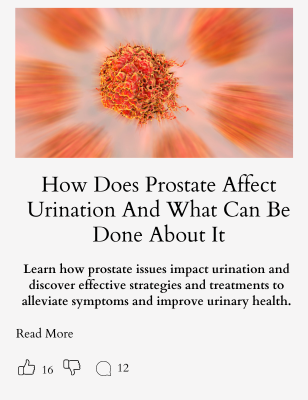The topic of weight loss through intermittent fasting is gaining attention due to its potential benefits and simple approach.
With various diet trends out there, many wonder just how effective intermittent fasting is for shedding pounds.
On average, people practicing intermittent fasting can achieve a weight loss of around 3% to 8% over 3 to 24 weeks, making it comparable to traditional calorie-reduction diets.
Intermittent fasting involves cycling between periods of eating and fasting, and it can fit any lifestyle. Its popularity has grown, with studies suggesting benefits such as fat loss and muscle retention.
For those interested in exploring this approach, understanding the types of intermittent fasting and their effects on weight can be crucial.
Research has shown that intermittent fasting can safely produce significant weight reduction and may even offer health perks beyond just losing weight.
Curious about starting on this path? Understanding the variety of fasting methods and their potential impacts on health can guide you to make informed choices.
Dive into the possibilities that this dietary approach offers and see how it aligns with your lifestyle and goals.
Key Takeaways
- Intermittent fasting can lead to notable weight loss similar to traditional diets.
- Studies indicate potential health benefits beyond just losing weight.
- Different methods of fasting offer flexibility to fit individual lifestyles.
Understanding Intermittent Fasting
Intermittent fasting is a popular dietary approach where individuals cycle between periods of eating and fasting. It aims to provide multiple health benefits, including weight loss and improved metabolic health, without focusing on what foods to eat.
Defining Intermittent Fasting
Intermittent fasting (IF) involves alternating periods of eating and not eating. Unlike traditional diets which specify what to eat, IF focuses on when to eat. People use it for weight management, metabolic health, and reducing insulin resistance.
There are various forms, each differing in fasting and eating times. Some find IF more flexible than conventional calorie-restriction diets.
It requires understanding and adjusting one’s schedule, which can impact its effectiveness.
Popular Fasting Methods
Several methods exist for intermittent fasting:
- 16/8 Method: Eat during an 8-hour window, fast for 16 hours.
- 5:2 Diet: Eat normally for five days, restrict to 500-600 calories on two non-consecutive days.
- Alternate-Day Fasting: Fast every other day.
- Eat-Stop-Eat: 24-hour fasts once or twice a week.
- Warrior Diet: Eat small amounts of raw fruits and vegetables during the day, one large meal at night.
- OMAD (One Meal a Day): Consuming all daily calories in a single meal.
People choose methods depending on personal preferences and lifestyle needs.
The Science Behind Fasting
Intermittent fasting affects the body in several ways. It can trigger processes that help in cellular repair and reduce inflammation.
Fasting may also enhance metabolic functions by lowering insulin levels, which aids in fat burning.
Studies have shown it can support weight loss and improve health markers such as blood sugar levels and cholesterol. Intermittent fasting can also impact mental sharpness by promoting brain health.
Some research explains the potential benefits in reducing the risk of chronic diseases.
Each fasting approach can lead to different outcomes, depending on an individual’s body and health goals.
Intermittent Fasting and Weight Loss
Intermittent fasting has gained attention for its potential effects on weight loss. Studies explore how it impacts body weight through changes in eating patterns. Key areas of interest include fat loss, muscle retention, and clinical trials assessing its effectiveness.
How Fasting Affects Body Weight
Intermittent fasting often involves cycles of eating and fasting periods. This pattern can help individuals achieve a calorie deficit by reducing calorie intake.
During fasting, the body shifts from using glucose for energy to burning stored fat, leading to fat loss.
People with obesity may see changes in body weight by adopting intermittent fasting. It encourages the body to utilize energy reserves, potentially aiding weight management when compared to typical calorie restriction.
Clinical Trials and Weight Loss Results
Clinical trials have been instrumental in evaluating intermittent fasting’s effectiveness for weight loss. Research such as that found in studies on intermittent fasting and its metabolic effects indicates promising results.
Participants in these studies often experience weight loss due to the calorie deficit created by fasting periods. Different types of fasting, like alternate-day fasting, have shown varied results.
Understanding these outcomes helps determine how sustainable and effective intermittent fasting is as a long-term weight loss strategy.
Fat Loss vs. Muscle Retention
A critical consideration with intermittent fasting is the balance between fat loss and muscle retention.
Some studies indicate that fasting, when compared to other methods like calorie restriction, can be effective in targeting fat loss.
Retaining lean muscle mass while losing fat is essential for a healthy body composition.
Ensuring adequate protein intake and engaging in resistance training can help maintain muscle during intermittent fasting, contributing to better long-term health outcomes.
Biochemical Impacts of Intermittent Fasting
Intermittent fasting has several effects on the body’s biochemical processes. It can influence insulin levels and blood sugar regulation, impact inflammation and overall metabolic health, and alter the production of certain hormones.
Insulin and Blood Sugar Regulation
Intermittent fasting often leads to improved insulin sensitivity. This means cells respond better to insulin, allowing glucose to be used for energy effectively.
Reduced levels of fasting insulin are often observed, which could lower the risk of insulin resistance.
Blood sugar levels tend to stabilize, decreasing the risk of developing diabetes.
This dietary approach can also reduce triglycerides, a type of fat in the blood, which can help in managing cholesterol levels.
Overall, this can contribute to a healthier metabolic profile.
Inflammation and Metabolic Health
Intermittent fasting might reduce inflammation markers in the body, potentially lowering the risk of chronic diseases like metabolic syndrome.
This dietary pattern can help in managing oxidative stress, contributing to better long-term health.
Some studies suggest that fasting reduces inflammation markers such as C-reactive protein.
Lesser inflammation means less risk for conditions like heart disease. Additionally, there may be slight increases in metabolic rate, which supports energy balance and weight management.
Hormonal Responses to Fasting
Intermittent fasting influences several hormones, including insulin and human growth hormone (HGH).
HGH levels can increase, supporting muscle mass and fat burning, aiding in weight loss.
Norepinephrine, a hormone related to stress response, can also rise, enhancing alertness and energy expenditure.
These hormonal changes contribute to improved insulin sensitivity and better energy use. This makes intermittent fasting an attractive option for those looking to manage their weight sustainably.
Health Benefits Beyond Weight Loss
Intermittent fasting is known for promoting weight loss, but its benefits extend to various aspects of health such as cardiovascular health, brain health, and metabolic improvements. These benefits can have significant, lasting impacts on overall well-being.
Cardiovascular and Heart Health
Intermittent fasting may improve cardiovascular health by reducing waist circumference and lowering LDL cholesterol. These changes can help decrease the risk of heart disease.
Research indicates that fasting can promote better heart health by positively affecting blood pressure and reducing inflammation.
Time-restricted feeding and other fasting methods might influence heart-related risk factors which could lead to better long-term effects on heart disease prevention.
With fewer calorie intakes, the body may improve insulin sensitivity, leading to reduced cholesterol and blood glucose levels. This not only benefits the heart but also supports healthier blood vessels.
Effects on Brain Health and Cognitive Function
Intermittent fasting could enhance brain health through various mechanisms.
One potential benefit is the increase in BDNF (brain-derived neurotrophic factor), a protein that supports the growth and survival of neurons. This might help protect against diseases like Alzheimer’s.
Fasting may also support improved cognitive function. Studies suggest that by reducing oxidative stress and inflammation in the brain, fasting can lead to clearer thinking and better memory.
Although more research is needed, these promising findings suggest a link between intermittent fasting and mental agility.
Type 2 Diabetes and Metabolic Changes
For those with or at risk of type 2 diabetes, intermittent fasting could offer notable metabolic health benefits.
By promoting dietary patterns that control blood sugar levels, fasting can lead to more consistent glucose readings and reduced insulin resistance.
This eating pattern may also lower fasting insulin levels and improve markers associated with diabetes.
Such changes help in managing weight and decreasing the risk of developing metabolic syndromes.
These metabolic changes offer a potential intervention for those looking to control or prevent diabetes through non-pharmacological means.
Nutrition and Diet Considerations
When practicing intermittent fasting, understanding nutrition is crucial. Eating well during feeding windows and managing hydration can support weight loss. Supplements may also play a role in meeting nutritional needs.
What to Eat During Feeding Windows
During feeding windows, a balanced diet is important.
Including lean proteins like chicken, fish, or tofu can aid in maintaining muscle mass. Vegetables should be a staple, providing essential vitamins and fiber to promote digestion and fullness.
Foods rich in healthy fats such as avocados and nuts can offer sustained energy.
It’s wise to limit processed foods high in sugar and unhealthy fats, as these can negate the benefits of fasting.
Overall, focusing on nutrient-dense foods ensures adequate calorie intake without excessive eating.
Managing Hydration and Electrolytes
Hydration is key during intermittent fasting.
Drinking enough water helps prevent dehydration, especially since fasting can increase fluid loss.
Electrolytes, such as sodium, potassium, and magnesium, are also important. They ensure proper body functions and can be depleted during fasting.
Including electrolyte-rich foods like bananas, spinach, and yogurt can help maintain balance.
In some cases, an electrolyte drink may be beneficial, especially during extended fasts.
It’s important to listen to the body’s signals for thirst and adjust fluid intake accordingly.
Supplements and Intermittent Fasting
Some people might consider supplements while intermittent fasting to meet their nutritional needs.
Multivitamins can help cover any dietary gaps, ensuring the body gets essential vitamins and minerals.
Omega-3 supplements provide healthy fats that support overall health.
If daily protein needs are hard to meet, a protein supplement like whey or soy can be useful, especially in maintaining muscle mass.
It’s important to select supplements wisely and consult with a healthcare provider to tailor them to individual needs.
The focus should remain on obtaining most nutrients from whole foods.
Starting Intermittent Fasting for Beginners
Intermittent fasting can be an effective way for beginners to start a healthier lifestyle. This guide covers essential steps to help newcomers transition into fasting smoothly, tips on creating a schedule, and ways to address common challenges.
How to Begin Your Fasting Journey
Starting intermittent fasting may seem daunting for beginners.
Begin by choosing a fasting method that suits your lifestyle. The 16/8 method, where you fast for 16 hours and eat during an 8-hour window, is popular and manageable for many. Another option is the 5:2 method, involving normal eating for five days and reduced calories for two days.
Beginners should gradually increase fasting periods. Begin with shorter fasting windows, gradually extending them as your body adapts.
Eating balanced meals during eating windows is crucial. Focus on whole foods, including proteins, healthy fats, and plenty of vegetables.
Staying hydrated is important. Drink plenty of water, and herbal teas are great options. These can help maintain energy and reduce hunger.
Building an Intermittent Fasting Schedule
Creating an effective intermittent fasting schedule involves planning.
Beginners should match their eating patterns with daily routines.
An effective strategy is to set fasting and eating windows at consistent times every day. Consistency helps the body adjust and makes the routine easier.
Consider work and social schedules when building your eating pattern.
A 12 p.m. to 8 p.m. eating window can fit many lifestyles, allowing flexibility for lunch and dinner.
Keeping track of meals in a journal or app can help maintain accountability.
Flexibility is also key.
If one fasting period doesn’t fit, adjust the schedule.
The goal is to find a flexible routine that suits individual needs while maintaining effectiveness.
Common Challenges and How to Overcome Them
Beginners may face challenges such as hunger and fatigue.
To address these, staying hydrated and consuming nutrient-dense meals during eating windows is essential. Such meals keep you fuller for longer and provide necessary energy.
An effective way to combat tiredness is to ensure adequate sleep.
Restful nights support overall well-being and help manage fasting demands.
You can also stay active, with light exercise like walking, which may reduce hunger and boost mood.
It’s normal to experience gradual adaptation.
Allow your body time to adjust without pressure.
Reaching out to a community of people practicing intermittent fasting can provide support and advice.
Monitoring Progress and Making Adjustments
Monitoring progress is essential in a weight loss journey.
Understanding how your body responds can guide necessary adjustments to your fasting plan.
Consulting experts can ensure you stay on track safely and effectively.
Tracking Weight Loss and Body Composition
Measuring progress involves more than just watching the scale.
It’s important to track changes in body composition, which includes muscle and fat percentages.
Using tools like bioelectrical impedance scales can help provide a fuller picture.
Keep a journal of caloric intake and activities to spot patterns.
Regularly tracking will make it easier to identify which habits are helping or hindering your weight loss.
Keeping an eye on metrics like waist circumference and how clothes fit can indicate success even if the scale is slow to show it.
Adjusting Your Fasting Plan
Intermittent fasting requires flexibility.
If you’re not seeing desired weight loss results, consider modifying your fasting schedule or caloric intake.
Small tweaks, like extending fasting windows or changing the type of meals consumed during eating periods, can make a difference.
Listening to your body is key.
Hunger levels and energy during fasting can provide clues about needed changes.
Experimenting with different approaches, such as alternate-day fasting or the 16:8 method, could help find a balance that suits individual needs and lifestyles.
When to Consult Health Professionals
While many can safely try intermittent fasting, seeking advice from a health professional is wise if unsure about its impact.
If losing weight is slow or if you encounter unexpected issues, experts like dietitians or doctors can offer valuable guidance.
It’s crucial when dealing with pre-existing conditions, including metabolic disorders or imbalanced body composition.
A second opinion can provide reassurance and necessary support to avoid potential setbacks and ensure overall health is maintained throughout the weight loss journey.
Exercise and Intermittent Fasting
Intermittent fasting and exercise can work together to improve weight loss and body composition.
Different types of exercises, like strength training and cardiovascular workouts, can have unique effects when combined with fasting.
The Role of Strength Training
Strength training involves exercises like lifting weights and using resistance bands.
These activities help build muscle mass, which can enhance fat loss. When muscles are stronger, they burn more calories, even when at rest.
Combining strength training with intermittent fasting can be effective for preserving lean muscle. This ensures that most of the weight lost comes from fat.
Research suggests that when individuals engage in strength training during fasting, they can maintain muscle while losing fat. This can lead to better body composition results.
Cardiovascular Exercises
Cardiovascular exercises, such as running, cycling, and swimming, are effective for burning calories and reducing body fat.
These activities can be especially beneficial when combined with fasting.
Studies have shown that cardiovascular exercises can lead to more significant weight loss when done in a fasted state.
The body may use stored fat as fuel during fasting, potentially increasing the fat-burning effects of cardio. This combination can accelerate overall weight loss.
People who perform cardio exercises during fasting may notice improved endurance and even better weight loss results.
Exercise Timing and Fasting Windows
The timing of exercise within a fasting window can significantly impact results.
Some people prefer working out in a fasted state, usually in the morning before eating, believing it may enhance fat burning.
Others choose to exercise after eating to have higher energy levels.
Research shows that exercising while fasting can improve the body’s ability to switch between burning carbohydrates and fat.
It is crucial to listen to your body and find the best routine.
Choosing the right timing that aligns with one’s fasting schedule can optimize the benefits of exercise and fasting together.
Potential Drawbacks and Risks
Intermittent fasting (IF) has gained attention for its potential health benefits, but it’s important to consider possible drawbacks and risks. Concerns often involve impacts on blood glucose, cholesterol, and inflammation levels, as well as possible long-term effects.
Understanding the Risks
Intermittent fasting can lead to changes in blood glucose levels. Some people may experience drops in blood sugar, leading to dizziness or fatigue. These fluctuations can be risky, especially for individuals with diabetes.
It’s important for those with chronic conditions to consult healthcare providers before starting a fasting regimen.
Changes in cholesterol levels are another concern. While some studies indicate that IF can improve cholesterol profiles, everyone does not experience these benefits equally.
People need to monitor their levels to prevent any unwanted outcomes. Intermittent fasting and cardiovascular disease might require careful consideration for some individuals.
Additionally, intermittent fasting may impact inflammation levels. Research has debated whether fasting helps or worsens inflammation, one key factor being individual response.
Those with existing health issues might notice more significant changes. Understanding these potential risks helps in making informed decisions regarding fasting practices.
Addressing Common Concerns
Concerns around intermittent fasting often revolve around hunger and nutrient intake.
Individuals might worry about feeling hungry or lacking energy.
These issues may be mitigated by ensuring balanced meals during eating periods.
Consuming nutrient-dense foods can help maintain energy levels without compromising health.
Potential loss of lean body mass is another concern.
Prolonged fasting periods may lead to muscle loss if protein intake is not adequate.
Combining fasting with exercise can support muscle retention, as discussed in fasting and exercise combinations.
Some worry about the social aspects of fasting or sticking to a regimen long-term.
Flexibility with the fasting plan and involving supportive friends or family can improve adherence and social engagement.
Long-term Effects of Intermittent Fasting
The long-term effects of intermittent fasting are still under investigation.
While some people maintain positive outcomes, others might experience different results over time.
Factors like lifestyle, diet, and individual health conditions play significant roles.
Sustainability is crucial.
Some individuals might find it challenging to maintain fasting schedules compared to regular eating patterns.
Studies point out that adherence can vary, with some experiencing difficulty over time.
Monitoring is essential to ensure continuing effectiveness, shown in studies on weight loss and metabolic disease risk.
Frequently Asked Questions
Intermittent fasting can lead to various weight loss results depending on factors like dietary habits and individual body responses. The 16:8 method is popular, and many wonder about its effectiveness over specific periods.
What are typical 16:8 intermittent fasting weight loss results after one week?
In the first week of 16:8 intermittent fasting, many people may experience a modest weight loss ranging from 1 to 3 pounds. This initial drop often reflects water weight and initial calorie reduction rather than significant fat loss.
Which intermittent fasting schedule is most effective for targeted belly fat loss?
The 16:8 approach, combined with a healthy diet and exercise, is known to help reduce belly fat. This method emphasizes an eating window of 8 hours, which can be effective for those aiming to lose fat in specific areas.
How much weight loss is generally observed after one month of 16/8 intermittent fasting?
After a month of following the 16:8 intermittent fasting plan, some individuals report losing between 4 to 8 pounds. This depends on their consistency with the fasting schedule and any additional lifestyle changes made during this time.
Can you expect to lose 20 pounds with a consistent intermittent fasting routine?
While losing 20 pounds through intermittent fasting is possible, it usually requires several months. The weight loss pace will vary based on factors like starting weight, diet quality, and activity levels.
What amount of weight loss is realistic within two weeks of starting intermittent fasting?
In the first two weeks, weight loss can range from 3 to 5 pounds. This is often due to initial adjustments in eating and activity. It’s important to note this is a general guideline and results can vary.
How does a 16-hour fast contribute to fat loss, and what are average outcomes?
A 16-hour fast promotes fat burning by extending the period of calorie restriction.
Average results in fat loss vary, but some people notice improvements in body composition within a few weeks, thanks to increased fat oxidation.















